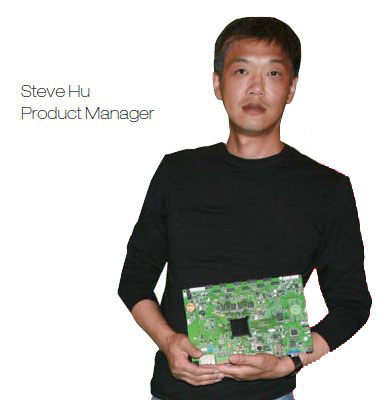When we look back at the way DVRs came to dominate the CCTV sector, we learn that the first DVRs on the market were PCs with capture cards and recording software. As demand increased, manufacturers invested in developing “stand-alone” appliances. These DVRs use hardware to digitize the video channels and store the data on hard drives without using a PC. As time went on, the prices came down, the functions improved, and most importantly, end users became comfortable using these devices.
When we look back at the way DVRs came to dominate the CCTV sector, we learn that the first DVRs on the market were PCs with capture cards and recording software. As demand increased, manufacturers invested in developing “stand-alone” appliances. These DVRs use hardware to digitize the video channels and store the data on hard drives without using a PC. As time went on, the prices came down, the functions improved, and most importantly, end users became comfortable using these devices.
Fast forward to the IP recording solutions of today; the vast majority are PC-based running NVR software. In some of the very large systems, this may always be the case, but the majority of camera systems are 36 channels or less. If we look at the biggest users of cameras — retail outlets — they typically have less than 16 cameras per store. Generally, these users prefer not to rely on PCs for operating their systems.
The time has thus come for the stand-alone NVR, an appliance capable of recording HD quality IP video streams but offering the familiarity and ease of use that DVR users have come to expect. This is, however, easier said than done, as recording and displaying 16 HD channels in real time require some heavy-duty hardware/software engineering and processing power.
The Architect
Four years ago, LILIN's Steve Hu and his R&D team realized that history would probably repeat itself, so they decided to take on the challenge to develop a hardware-based solution that would be as easy to operate as a DVR but deliver the HD quality that IP-based surveillance systems today offer. It would also be simple to install and configure, enabling and empowering security installers to migrate to IP technology.
Back then, there were no application-specific ICs and processors capable of decoding that many channels of HD and displaying them simultaneously on one screen. Unfazed, Hu and his team began working on the architecture and operating system while collaborating with leading chip developers to bring the technology to life. This engineering effort enabled some other ideas to flourish, a touch screen interface that allows for multitouch operations like digital zoom and image panning with an icon-based menu system that will be familiar to smartphone users around the world.
The Fruit
It was not an easy journey.
It took a long time and massive R&D investment from LILIN, but as a developer and provider of recording solutions and IP cameras, we only had to look back a few years to see where the future might lead. It would have been easier to develop software or rely on third-party software developers, but we had a strong feeling we knew what the market would want, we knew what the installers were comfortable with and we knew what end users liked.
In May 2012, LILIN unveiled the NVR Touch. Hu's team has developed a single PCB to deliver all functionality. It is packaged into a DVR form factor, with front buttons and a jog shuttle control, plus a DVD writer and USB socket for copying recordings. The board can be stored for long periods. We were able to carefully cost engineer the hardware, meaning the end product is not much more expensive than a good quality DVR and less expensive than PC-based NVRs. As with DVRs, there are no license costs.
4, 9, 16 Channels

The NVR Touch offers stunning HD quality recordings for real time up to 16 channels (NVR-116); multiple NVRs can be controlled by our free CMX central management software, providing 72 channels across two monitors. They can be controlled, like a traditional DVR, directly on the front panel, by the IR remote control, our standard joystick/keyboard or the wonderful touch screen option. Users can also connect directly via a Web browser or a wide range of iOS, Android and BlackBerry mobile devices and tablets. LILIN's unique touch screen interface takes advantage of highly intuitive smartphone-style features, like pinch and zoom, and multitouch and scrolling icon-based menus, minimizing deployment time. The entire NVR series also has an automated installation wizard (WS Discovery), which locates all the cameras on the network and imports a preview picture of each channel to help with identification. This greatly speeds up commissioning.
The good news is 4- and 9-channel versions, the NVR-104 and NVR-109, are also available, providing cost-friendly solutions for smaller projects without compromising quality. Offering 4 or 9 channels of 1080p at 25 fps, all of the unique benefits associated with the NVR-116 are incorporated in the smaller channel versions.
The difficult thing now is to show you in the flesh how well this all works. Give us a call, drop us an email, or pay us a visit at one of the more than 15 trade shows that LILIN exhibits at every year.
Sponsored by:
For more information, please visit LILIN's corporate site on asmag.